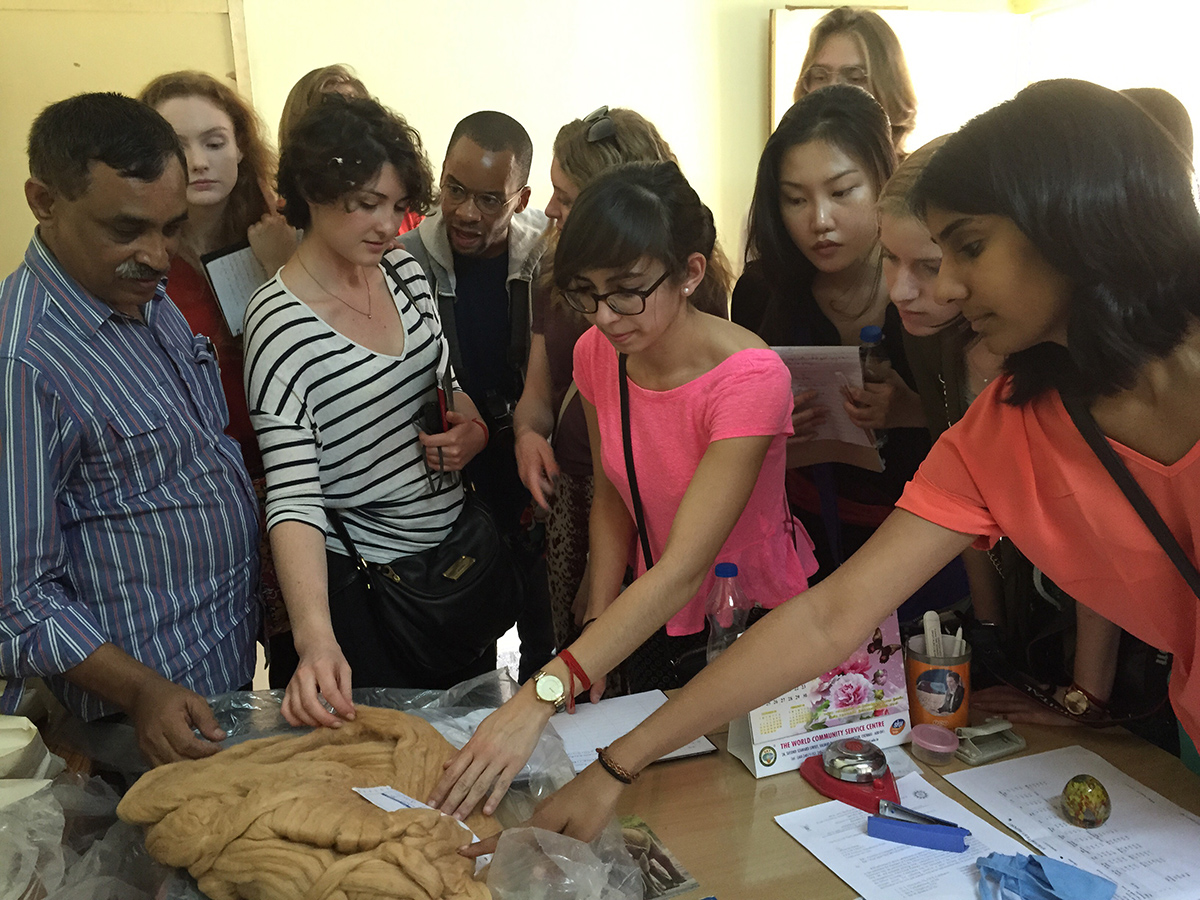In India, students size up global apparel industry
By Sherrie Negrea


Sloane Applebaum ’18 will never look at a “Made in India” clothing label the same way again.
After a two-week class trip to see textile and apparel production centers in the country, the world’s second-largest producer of cotton, Applebaum now pictures the people who labored to make the fibers, weave them into fabric, cut the material and sew the shirt hanging in her closet.
“I never thought much about the international market and the people who are making our clothes,” said Applebaum, a fashion design management major from Wayne, New Jersey. “Now I can’t stop thinking about it. Every time I put on a shirt and look at the label, I think about those people and what are their conditions like.”
From Jan. 2-16, Applebaum and 12 other students and two faculty members from the Department of Fiber Science & Apparel Design (FSAD) in the College of Human Ecology traveled to Hyderabad, Bengaluru, Coimbatore and Tiruppur, visiting fiber, apparel and textile mills, laundering facilities, design studios, textile research centers and a handloom park where traditional ikat fabrics are dyed and woven.
The winter break trip – the fourth FSAD students have taken to India since 2011 – is part of the course, Textiles and Apparel in Developing Nations, taught by FSAD assistant professor Denise Green ’07, who led the tour with Juan Hinestroza, FSAD associate professor.
While students learn about apparel production in many of their courses, Green said they rarely see the manufacturing process because there are relatively few textile and apparel facilities operating in the United States.
“This trip allowed students to witness all aspects of the apparel supply chain. They saw the amount of human labor and material resources used in the design and manufacture of apparel, and observed how the industry impacted local economies, the environment and human health,” Green said.
Joanne Kim ’17, a fashion design management major from Harrington Park, New Jersey, said she was most impressed by the many steps it takes to produce a piece of clothing.
“It takes so much more work to create one shirt and one pair of shorts,” Kim said. “A lot of consumers here in America have no idea what it takes to get to that final product and no knowledge of what stands behind that label.”
Hinestroza said the trip is a “life-changing experience” for the students.
“We expect the students who traveled with us to become leaders and future owners and managers of textile and fashion brands, and that they will see the business in a different way,” he said. “We hope this experience will help them be the change we want to have in the industry.”
The trip, offered jointly with the course, Agriculture in Developing Nations II, in the College of Agriculture and Life Sciences, received financial support from Ajit Khaitani, whose daughter, Karishma Khaitani ’10, studied fashion at Cornell. Khaitani, owner and CEO of United Dry Goods, which produces the popular Justice clothing brand, covered students’ in-country expenses during their visit.
Sherrie Negrea is a freelance writer.
Media Contact
Get Cornell news delivered right to your inbox.
Subscribe